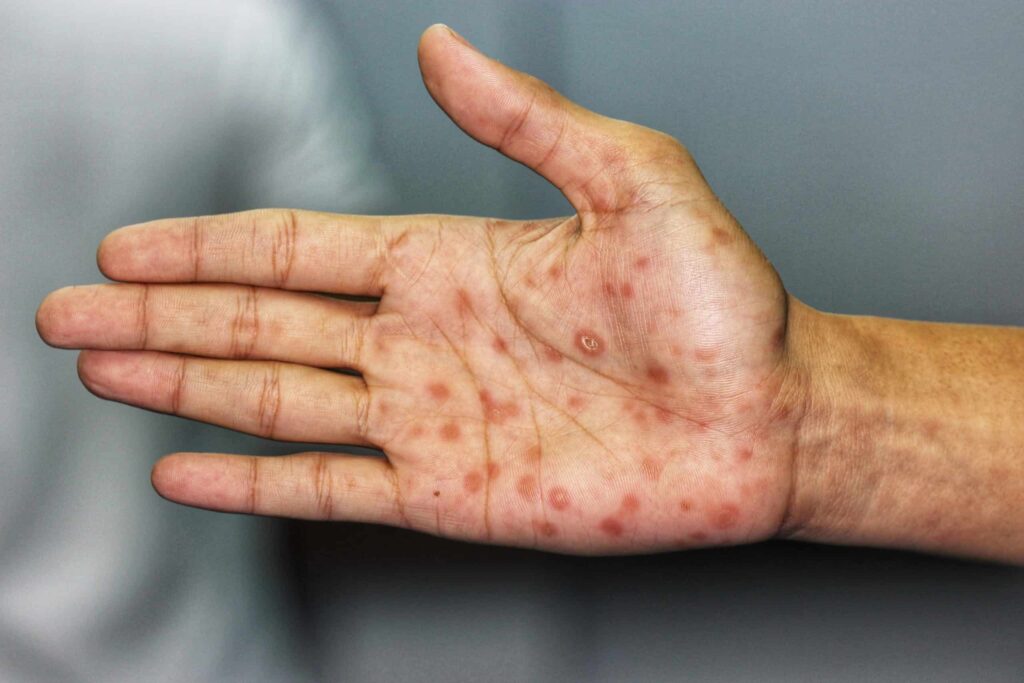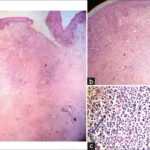Syphilis is a chronic, systemic sexually transmitted infection caused by the spirochete bacterium Treponema pallidum. The disease progresses in distinct clinical stages, each with its own manifestations and complications. Left untreated, syphilis can lead to severe neurological, cardiovascular, and systemic consequences. Despite the availability of effective antibiotic treatments, syphilis remains a significant public health concern worldwide due to its increasing incidence and subtle early symptoms.

Modes of Transmission: How Syphilis Spreads
Syphilis is primarily transmitted through direct contact with syphilitic sores during vaginal, anal, or oral sexual activity. The bacterium enters the body through microscopic abrasions in the skin or mucous membranes.
Key transmission methods:
- Unprotected sexual contact with an infected partner
- Vertical transmission from an infected mother to fetus (congenital syphilis)
- Blood transfusions (extremely rare due to screening protocols)
- Sharing needles (less common)
Stages of Syphilis: Progression of Disease Over Time
Syphilis is classically divided into four distinct stages, each characterized by unique clinical features.
Primary Syphilis
- Onset: 10 to 90 days post-exposure
- Characteristic feature: A single, painless chancre (ulcer) at the site of infection
- Location: Genitals, rectum, mouth
- Lymphadenopathy: Regional, non-tender
Secondary Syphilis
- Timeline: 4 to 10 weeks after chancre heals
- Symptoms:
- Symmetric maculopapular rash (commonly on palms and soles)
- Mucous patches and condyloma lata
- Fever, malaise, sore throat, myalgia
- Highly infectious at this stage
Latent Syphilis
- Early latent: Within 1 year of infection, asymptomatic but still infectious
- Late latent: After 1 year, not contagious but bacteria persist
Tertiary Syphilis
- Timeline: 10–30 years post-infection
- Manifestations:
- Gummatous lesions in skin and bone
- Cardiovascular complications (aortitis, aneurysms)
- Neurosyphilis (tabes dorsalis, general paresis)
Congenital Syphilis: In Utero Transmission Risks
When Treponema pallidum crosses the placenta during pregnancy, it causes congenital syphilis, resulting in miscarriage, stillbirth, or severe neonatal complications.
Early signs in neonates:
- Snuffles (infectious nasal discharge)
- Hepatosplenomegaly
- Bone abnormalities
- Skin rashes
Late signs:
- Hutchinson’s triad: notched incisors, interstitial keratitis, sensorineural deafness
- Saddle nose deformity
- Frontal bossing
Diagnostic Tools: Confirming Syphilis Infection
1. Serological Testing
Syphilis is primarily diagnosed through a combination of non-treponemal and treponemal tests.
- Non-treponemal tests (screening):
- VDRL (Venereal Disease Research Laboratory)
- RPR (Rapid Plasma Reagin)
- Quantitative results used for monitoring treatment response
- Treponemal tests (confirmation):
- FTA-ABS (Fluorescent Treponemal Antibody-Absorption)
- TP-PA (T. pallidum Particle Agglutination)
- Treponemal ELISA or chemiluminescence immunoassays
2. Direct Visualization
- Dark-field microscopy: Visualization of T. pallidum in active lesions
- PCR testing: Detection of bacterial DNA, especially in congenital or neurosyphilis cases
3. Lumbar Puncture
Indicated when neurological or ocular syphilis is suspected. CSF analysis helps confirm neurosyphilis.
Syphilis Treatment Protocols
First-Line Therapy: Penicillin G
- Primary, secondary, and early latent: Single intramuscular injection of benzathine penicillin G (2.4 million units)
- Late latent and tertiary: Weekly injections for 3 weeks
- Neurosyphilis: Intravenous aqueous crystalline penicillin G, 10–14 days
Alternative regimens (penicillin allergy):
- Doxycycline 100 mg orally twice daily for 14 days (non-pregnant patients)
- Desensitization recommended in pregnant women
Jarisch-Herxheimer Reaction
- Acute febrile response after treatment due to rapid lysis of spirochetes
- Typically self-limiting within 24 hours
Follow-Up and Monitoring
- Serologic monitoring: Quantitative non-treponemal titers at 6, 12, and 24 months
- Retreatment: Indicated if titers fail to decline fourfold within 6–12 months
- Partner notification and treatment: Essential for disease control
Prevention and Public Health Measures
1. Safe Sex Practices
- Consistent condom use
- Mutual monogamy
- Regular STI screening for sexually active individuals
2. Prenatal Screening
- Mandatory syphilis testing during first prenatal visit and in third trimester in high-risk populations
3. Education and Awareness
- Community outreach
- Integration of syphilis screening with HIV testing
- Contact tracing and partner management
Frequently Asked Questions:
Q1. Is syphilis curable?
Yes. Syphilis is completely curable with antibiotics, particularly penicillin, when diagnosed early.
Q2. Can syphilis come back after treatment?
Reinfection can occur with new exposure; however, properly treated individuals do not relapse from the same infection.
Q3. How soon after exposure can syphilis be detected?
Non-treponemal tests generally become positive within 1–3 weeks after the appearance of the primary chancre.
Q4. Is syphilis contagious during all stages?
It is most contagious during the primary and secondary stages. Latent and tertiary stages are not considered infectious.
Q5. Can syphilis cause permanent damage?
If left untreated, tertiary syphilis can cause irreversible organ damage, including neurological and cardiovascular complications.

